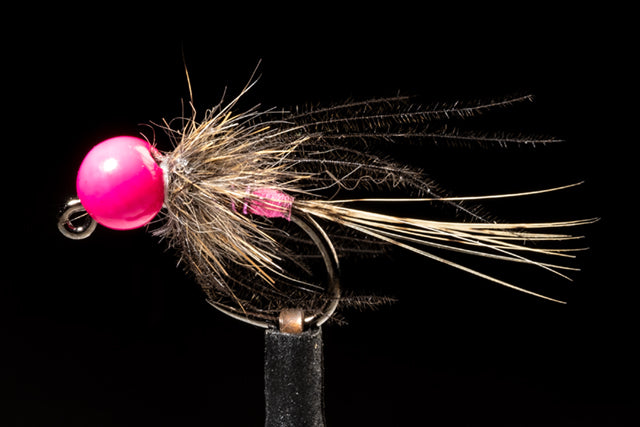The Meander River | Tasmanian Fly Fishing Spots
OVERVIEW OF THE MEANDER RIVER
The Meander River begins life in the Great Western Tiers in Northern Tasmania, making its way through alpine bush before flowing into Lake Huntsman just out of the township of Meander. Below the dam, the river flows through a mixture of bush and farmland before its confluence with the South Esk River at Hadspen.
Since the construction of the dam, the river has benefited from consistent environmental flows and the quality of fishing has improved. The upper reaches has good access, with miles of ideal nymph and dry fly water available.
Below Deloraine access become more limited, the river slows and larger pools become more common. Wonderful dry fly fishing is feature attraction of this region with excellent hatches of mayfly and grasshoppers to be found.
Brown trout dominate, but reasonable numbers of rainbows are present. The upper river holds a large population of small to medium sized trout, below Deloraine to its confluence fish are bigger, with fish in excess of 4lb present.
WHEN TO FISH THE MEANDER RIVER
Feature fishing on the river now occurs October to late April.
The construction of the Huntsman Dam has lessened the occurrence of regular flooding, and the early season floodplain fishing which was once a reliable feature on the lower river during August and September has become less consistent.
HIGHLIGHTS OF THIS FISHERY
- The river below the dam outflow through to Barretts Bridge has many kilometres of faster water and runs that are ideal for Upstream and Euro-nymph techniques. The water in this area typically runs cold and clear, there is high population of fish, many of which can be successfully targeted with dry flies. Fish feed well on hatches of small mayfly and caddis, followed later in summer by grasshoppers.
- The middle and lower reaches are home to some fantastic dry fly fishing. Prolific hatches of Caenid and Baetid mayfly occur, followed by and red and black spinners taking to the wing later in the day. The best fishing for mayfly feeders will be found on slower runs, with late October, November and December being the most reliable months before Christmas. A reoccurrence of mayflies is seen in autumn when the settled weather of March and April stimulates exciting dry fly action towards the conclusion of the season.
- Willow grubs hatch throughout summer and early autumn with the section between Deloraine and Hadspen being the place to focus.
- Late summer will see the arrival of grasshoppers, with the mid to lower sections of river offering exciting fishing for hopper feeders. The area downstream of Knights Bridge is a great spot to look for some good sized fish hunting grasshoppers.
- Grasshoppers will dominate through to the end of March until they are replaced by the re-appearance of daytime mayflies, producing some reliable dry fly fishing throughout April.
ACCESS POINTS TO THE MEANDER RIVER
The upper reaches from the outflow of Lake Huntsman to the town of Deloraine offer good access, and superb dry fly and nymph water.
Map of access points by IFS Tasmania
Access becomes more limited downstream of Deloraine, but there is some great water available. The section of river below the town of Hagley has reasonable access (permission may be gained by speaking to land owners outside of IFS Angler access points). Birralee road has some great water with designated access points and further downstream the river runs close to Westwood road where there is access at both bridges. Upstream from “Junction Farm’ offers some lovely water and river both sides of Knights Bridge is worth a visit.
GEAR REQUIRED
For the majority of upstream dry fly and nymph fishing 8” to 9”ft rods in line weights 3 -5wt rigged with floating lines are great options for this water. The Primal Raw 8’6” 4wt and Scott G Series 8’8” 4wt are perfect rods for this style of fishing.
The upper Meander is a wonderful Euro-nymph venue. Anglers wishing to fish in this style will find 9’6”” to 10’6”ft rods in line weights 2-4wt well suited. The Primal Zone Euro Nymph teamed with an Airflo SLN line make a well balanced combination for this style of fishing.
FLY SELECTIONS
Nymphs
Nymphs in sizes #14-18 work well on the river and should be carried with bead sizes from 2mm - 2.8mm. It pays to carry a mix of bead colours, silver, black, gold and pink all work well depending on the day. Mayfly imitations work well, with patterns like the Pheasant Tail nymph being reliable and hard to beat.
Dry Flies
These should include patterns like the Royal Wulff, F Fly, Caddis, parachute Adams for the upper river, plus the addition of hopper patterns, Shaving Brush, Willow Grub, Black and Red Spinners and adult damsel flies for the lower sections.
Wet Flies
Patterns like black Woolly Worms, Black Beetle and Worm Flies are good options for early season backwater fishing.
Manic Fly Collection Must Haves

Smethurts Baetis Bomb

Jig BTB Pheasant Tail

Jig Pink Pheasant Tail

Kyles Deleatidium

Hi Vis Possum Dun

Kyles Nesameletus Dry

Kyles Coloboriscus Dry

Wave Rider Dun

